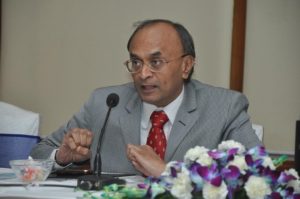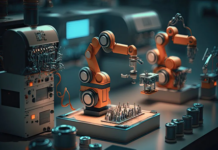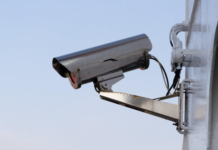
IESA (India Electronics and Semiconductor Association) has introduced DEFTRONICS platform to boost the Aerospace & Defense sectors. The Indian Aerospace & Defence Industry is one of the most lucrative industries and a booming market with an ocean of opportunities for design, prototyping, testing and manufacturing companies.
Electronics Media had an interview with Mr. M .N. Vidyashankar, President IESA at their office premises to discuss over the DEFTRONICS 2017, an event on Electronics System Design & Manufacturing (ESDM) industry, going to take place on Aug 31st – Sept 1st 2017 in Hyderabad India. M N Vidyashankar has shared his insights on DEFTRONICS 2017 and how Indian AEROSPACE & DEFENSE SHAPING UP. EXCERPTS
Electronics Media: How DEFTRONICS 2017 is unique from its 2016 edition? As the theme suggest “Accelerating self-reliance in Aerospace, Defense and Internal Security”so what are the strategic plans to implement this agenda in economic growth of India?
Mr. Vidyashankar: India Electronics and Semiconductor Association (IESA) is hosting DEFTRONICS – one of the largest International symposiums on Aerospace & Defence Industry, in Hyderabad on August 31 and September 1, 2017. The fourth edition of DEFTRONICS will be held with the theme “Accelerating Self-reliance in Aerospace, Defence and Internal Security”. The summit will focus on major programmes and opportunities in the Indian aerospace and defence industry for both Domestic & Global Market; showcase success stories in A&D; discuss on New technologies in A&D, Internal Security and Cyber Security and Start-up & Innovation. Whereas Deftronics 2016 primarily focused on topics like Design led manufacturing, Defence Clusters & Perspective Planning, Indian Value Chain and Opportunity
Electronics Media: What opportunity will this event bring for Indian Start-ups & SMEs? How many investors and manufacturers are you expecting to attend the event?
Mr. Vidyashankar: Startups, SMEs and Innovation are Important for any sector of business are as markets are being disrupted, directly and indirectly, by technology, global competition and changing consumer sentiment. In order to change the narrative of India being the world’s largest defence importer, we need a much greater participation from the private sector than what we see at present. A robust defence SME sector will encourage defence manufacturing and also will see India as an active player in the global market. Deftronics 2017 will bring all the stakeholders together where the Start-ups and SMEs can network with the key industry leaders, key government representatives, gain knowledge on the latest trends and opportunities from the 2 day conference and also exhibit their products and services.
Electronics Media: How much investment are you expecting in Aerospace and Defence sector under “Make in India” initiative with association to ESDM sector? How India has become the attractive destination for international investors especially for Aerospace and Defence?
Mr. Vidyashankar: The opportunity for electronics in India stems across both stand-alone systems as well as at a subsystem level for other systems. The total market opportunity for A&D electronics for India ranges from US$ 70-72 bn in next 10 -12 years. Of this almost US$ 53-54 bn emanates from electronics spend as part of platforms (i.e., at Tier 1 and Tier 2 levels). Another US$ 17-18 bn of demand emanates from projects which are traditionally called system-of-system projects like Indian Army’s Project TCS, BMS etc.
Electronics Media: How much India has grown its in-house production capacity in Aerospace & Defence and where do we see Indian A&D industry in terms of self-production by 2030.
Mr. Vidyashankar: India’s position as the world’s largest arms importer is likely to change with the Indian government’s long-awaited policy to boost local defence manufacturing by effectively picking industry champions that would tie up with foreign players to make submarines, fighter jets, helicopters and armoured vehicles. Foreign firms will share technology with local players and manufacture in India and in turn will be guaranteed a part of the $250 billion defence outlay over the next decade. This opens up a plethora of opportunities for private players, even those in niche segments, to partner up and pave the path forward for self-reliance in defence manufacturing. Many Indian companies are expected to move up the value chain and become independent system integrators across the technology-design-system integration value chain.
Electronics Media: What does IESA plan to create and support more and more ESDM hubs in India and is IESA following any strategy for it?
Mr. Vidyashankar: IESA has been working very close with the ESDM industry, the government and the other stakeholders to bridge the gap and take the industry forward. IESA has been working very closely with both the central and state governments. IESA has been fundamental in providing inputs on the various policies like NEP, IoT Draft Policy, Defence Electronics Policy, etc. which have been highly beneficial for the industry. IESA has also been fundamental in setting up Incubation centres, COEs etc. with the help of Government. IESA keeps organizing networking opportunities at very large scale bringing Government, industry, academia and other stakeholders together. IESA along with its partner associations has been mentoring many startups and actively aiming at fostering entrepreneurship in India. ESSCI and IESA have already been engaged to upskill graduates/post-graduates across the state including working on Finishing Schools. The goal is to make the Graduates and post graduates industry ready. IESA has also been fundamental in setting up Incubation centres (for example, Electropreneur Park in Delhi), COEs etc. and working on new projects.


















